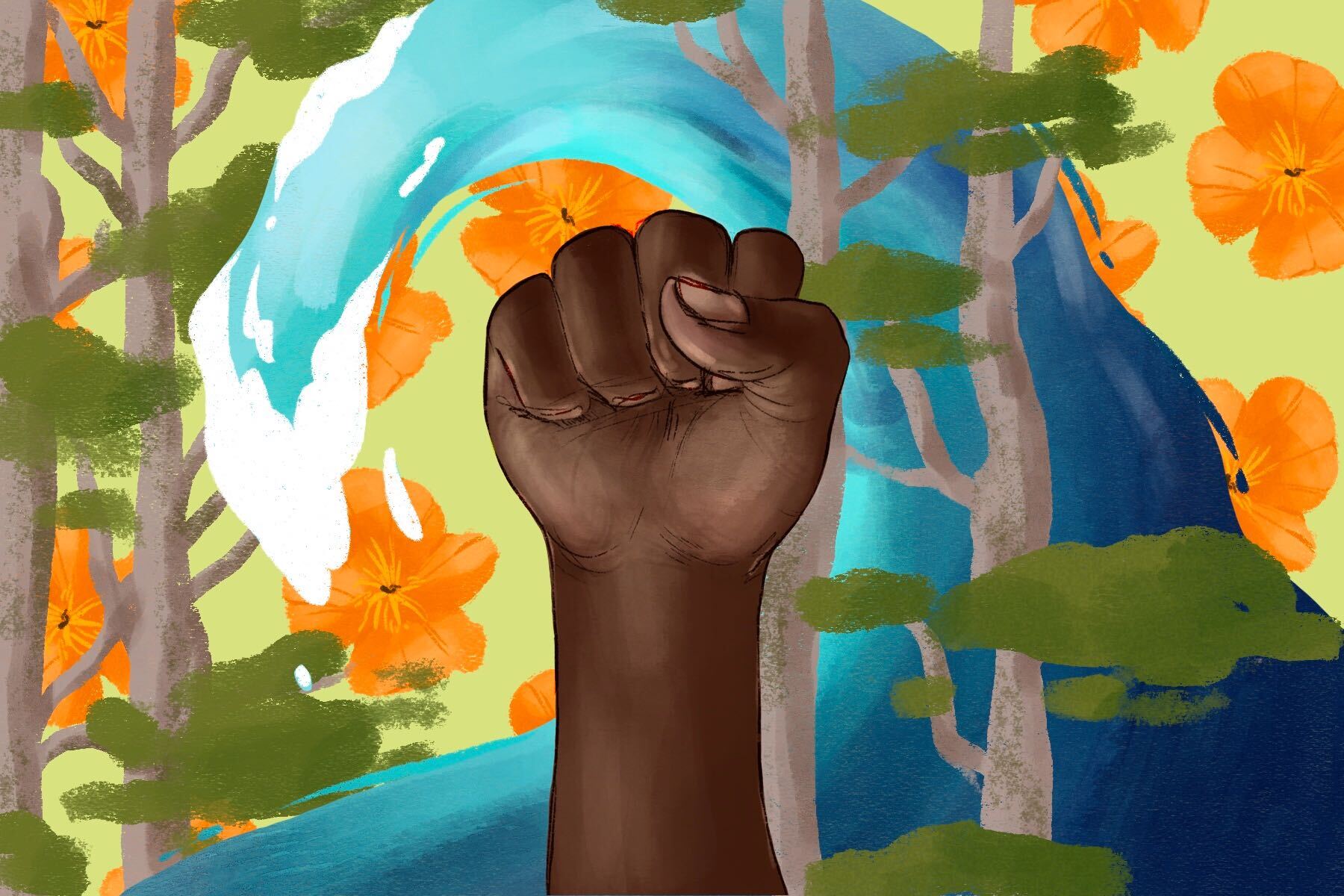In 1982, the North Carolina state government designated Warren County — a predominantly Black community — as the site of a newly built toxic waste landfill that would receive 6,000 truckloads of polychlorinated biphenyl (PCB) contaminated soil. As PCB in soil poisons drinking supplies, the hazardous site of toxic waste prompted resistance from Warren County’s Black residents, who blocked the trucks from arriving by lying down on the roads.
This led to six weeks of protests, resulting in the arrests of over 500 people; it was the first time in U.S. history that people were arrested for protesting a landfill site. Although the toxic waste was eventually dumped in the landfill, the protests in Warren County sparked the environmental justice movement — a movement led by people of color who brought national attention to how the climate crisis is violently intertwined with systemic racism.
Writer and environmentalist Mary Heglar wrote on the whitewashing that occurs when discussing climate change, and how it is necessary to understand racism and climate change as oppressive issues that operate together. “Climate change takes any problem you already had, any threat you were already under, and multiplies it. When you take a population that has lived in chronic crisis, under constant threat, for generations — from police violence to housing discrimination to general disenfranchisement — and add yet another threat?” wrote Heglar. “That’s not just a recipe for catastrophe. With the climate crisis itself — the storms and the temperatures — it’s not so much that the game is rigged, it’s the playing field. Climate change is not the Great Equalizer. It is the Great Multiplier.”
As white America begins to arise from its colorblind stupor, filled with performative and empty actions, it is essential to continue conversations pertaining to the present day impacts of colonialism. Considering that colonialism is rooted in the appropriation of stolen land, using it as a key factor to maintain capitalism and other racist social structures, the environment has been used by white settlers as a tool to oppress people of color. As Heglar explains, the climate crisis is not the great equalizer.
Instead, communities of color are constantly exposed to higher rates of air pollution, lead poisoning and water contamination. Similar to what occurred in Warren County in 1982, landfills, factories and other hazardous waste sites are also more likely to be located in communities of color.
The consequences of environmental racism bleed into the health of people of color, causing generations of disease and other health problems. Air pollutants, or particulate matter, are known carcinogens that have also been linked to asthma, heart attacks, high blood pressure and even premature deaths.
This is where it becomes essential to examine the way in which both capitalism and colonialism rely on co-opting the environment for both financial gain and global power. These systems work to create and sustain environmental racism — from the imperialist appropriation of land and people for profit, to disproportionately placing polluting factories in communities of color and contaminating their water.
This points to a level of accountability that is neglected from whitewashed environmentalism; as (white) climate activists cling to the idea that the climate crisis impacts people equally, the World Health Organization predicts that climate change will cause 250,000 deaths between 2030 and 2050, predominantly in developing nations.
In the wake of COVID-19, the detrimental impacts of environmental racism become increasingly more apparent, as over 2 million Americans do not have access to clean running water. Preventative measures aimed at “slowing the spread” of the coronavirus appeared to be relatively simple, particularly the constant reminder to “wash your hands” as often as possible. But when millions of Americans lack access to clean running water, that advice becomes obsolete.
For example, the water department in Martin County, Kentucky — where water is either lead-poisoned or non-existent — “operates in a constant state of emergency,” which has led to residents fearfully avoiding water in their homes all together. They instead rely on hand sanitizer and store-bought bottled water. As the pandemic continues, shortages of those basic necessities run rampant.
The water supply has also been contaminated in Navajo Nation for decades, caused by uranium mining and the Gold King Mine spill. An overall lack of clean running water in Navajo Nation has resulted in residents needing to travel miles for attainable water sources. Now, it has the highest COVID-19 infection rate per capita, and more than 300 people have died. Food deserts, as well as the lack of clean water and federal funding to maintain strong infrastructures — issues stemming from the legacy of colonialism and perpetuated through present-day sociopolitical systems — have heightened coronavirus cases and deaths.
It is important to distinguish environmentalism from the whitewashed lens of environmentalism that has dominated the media. A lot of white climate activists place the environment at the forefront of social issues, while ignoring the role of environmental racism in the climate crisis.
White privilege basks in a detachment of land that has been stolen, appropriated and destroyed, while simultaneously questioning how things got to this point. This becomes more sinister when the roots of environmental issues are explored in their entirety, specifically the way in which coloniality and white supremacy alike work to oppress communities of color through the destruction of the environment; to compound this, communities of color are then socially tasked with the responsibility of making things better.
The environmental justice movement reiterates this issue, exposing the racist reality of contemporary environmental policies along with the way in which systemic racism sustains the presence of the climate crisis.
When discussing environmentalism, I also think that it is crucial to establish environmentalism as something that cannot exist without anti-racism — particularly in that whiteness has worked to co-opt the movement into a whitewashed space in which environmentalism is separated from other spheres of activism, when instead they should be understood in tandem with each other. As climate activism continues to be a necessity, there needs to be an adjustment to the ways in which environmentalism is executed.
Beginning with a commitment to learn about environmental racism and what it looks like, environmentalism calls for an amplification of the experiences of BIPOC and action from the socially privileged to combat racist structures. Especially during a pandemic, it is imperative to support communities of color, either through personal reparations, or through supporting mutual aid organizations that directly provide donations and resources to the BIPOC communities that have been disproportionately impacted by COVID-19 and environmental racism.
Anti-racism is a continuous process, one that requires an acknowledgement of a colonial past and present in relation to each other. Without anti-racism, the environmentalist movement loses its power to dismantle the colonial roots of its cause.
















